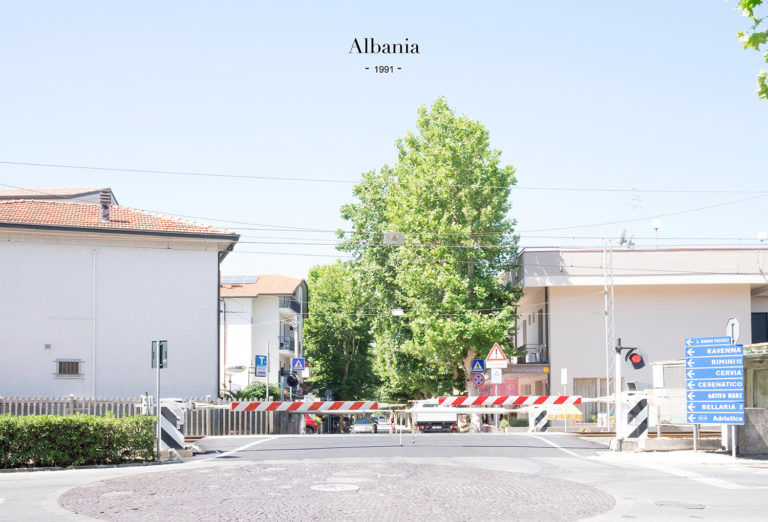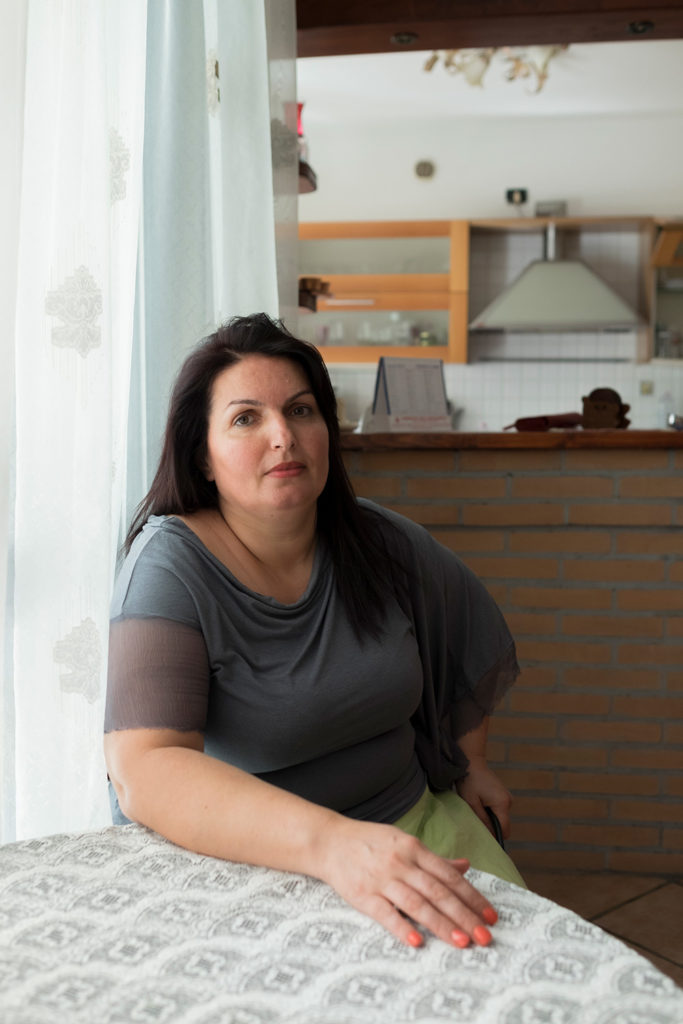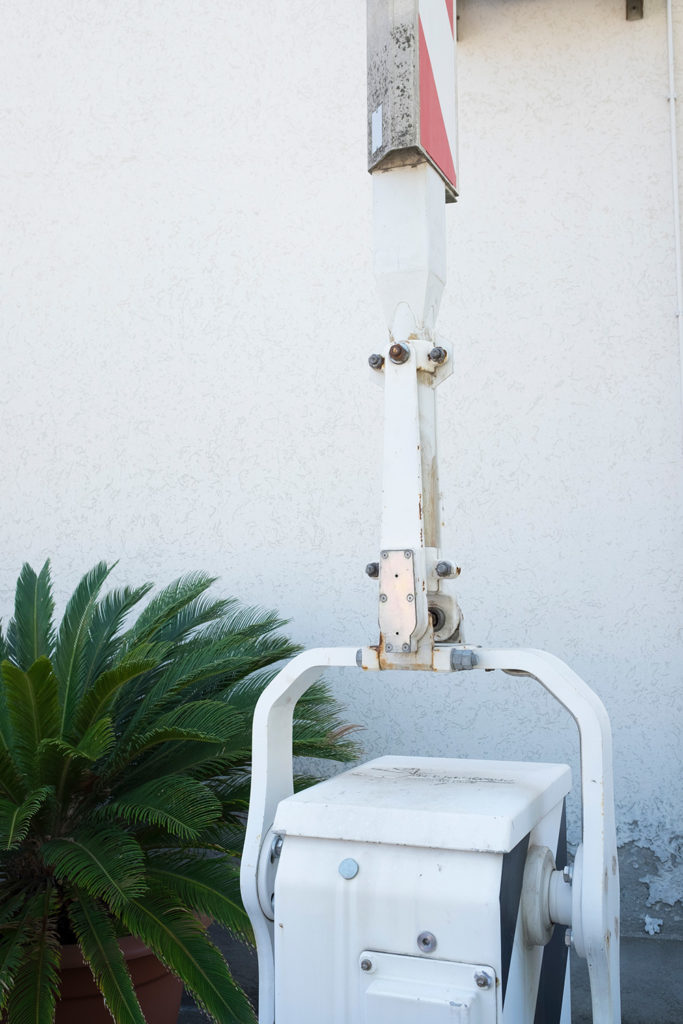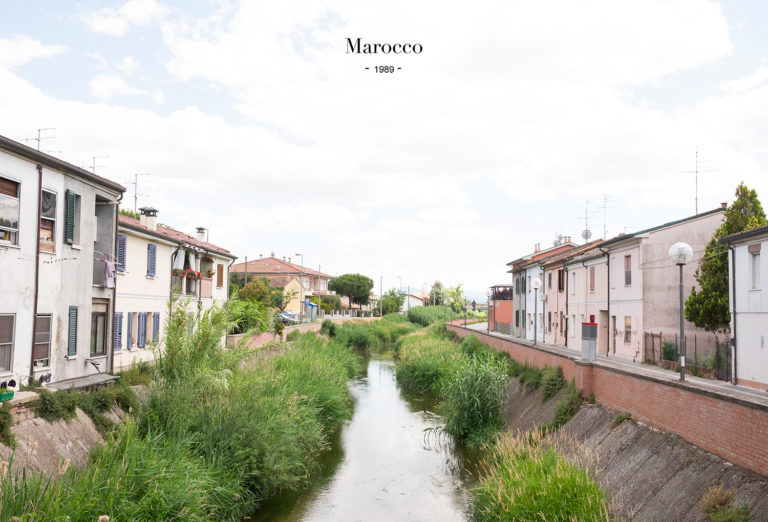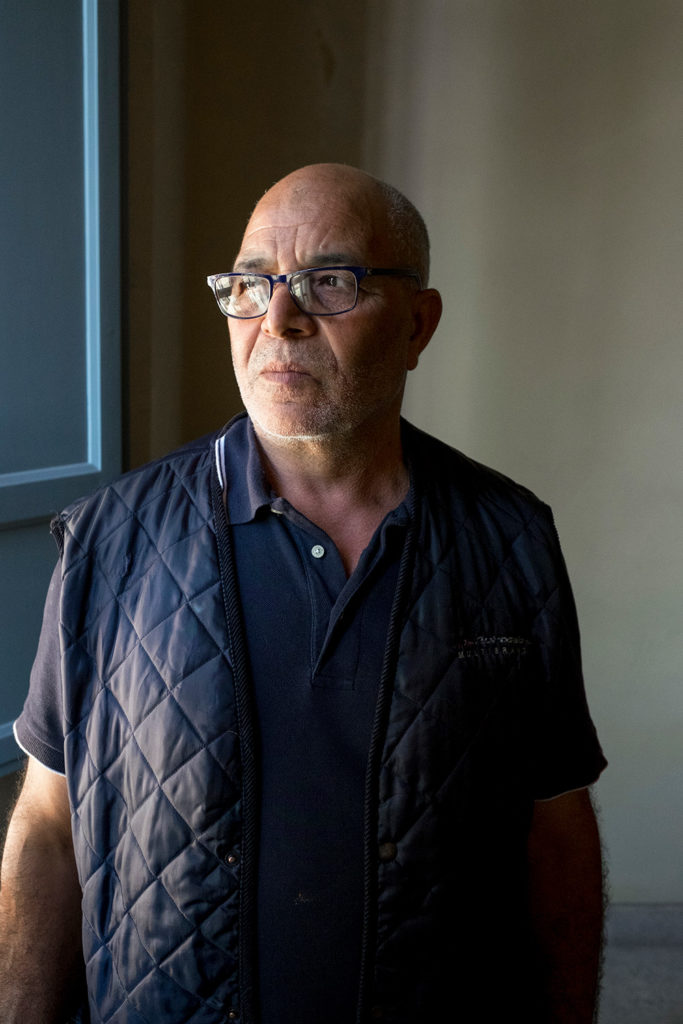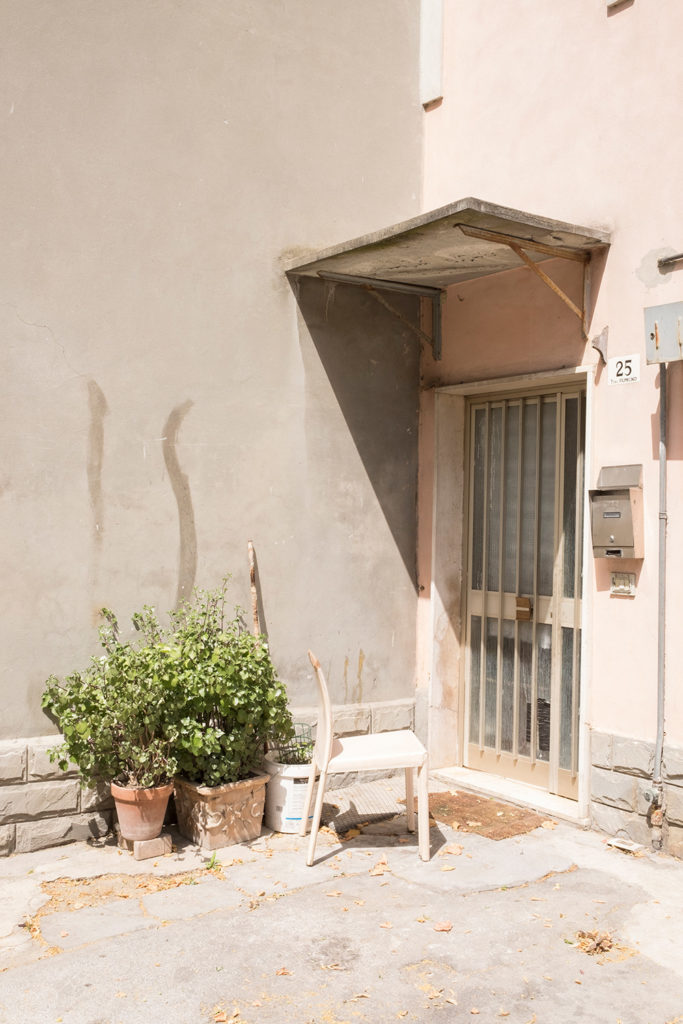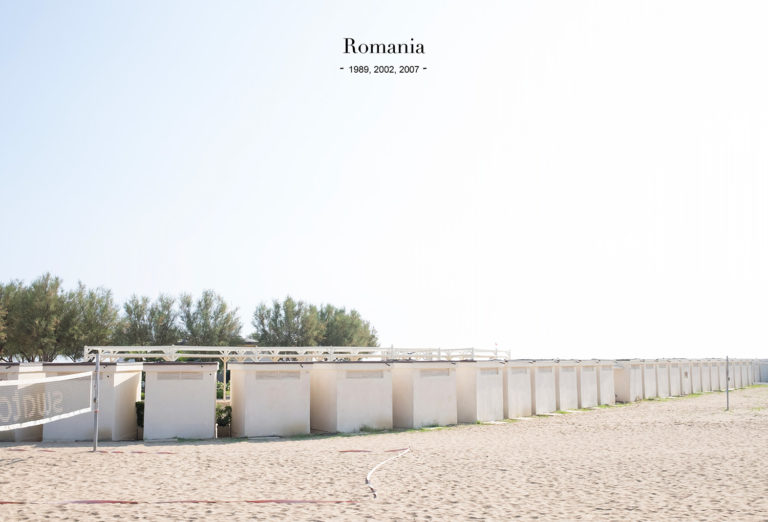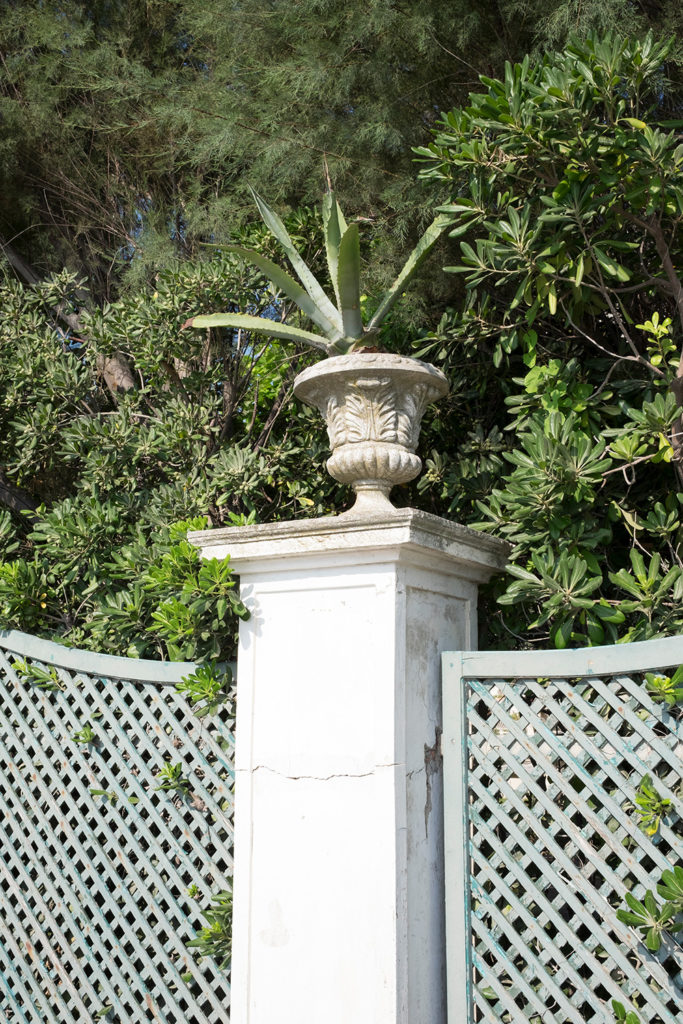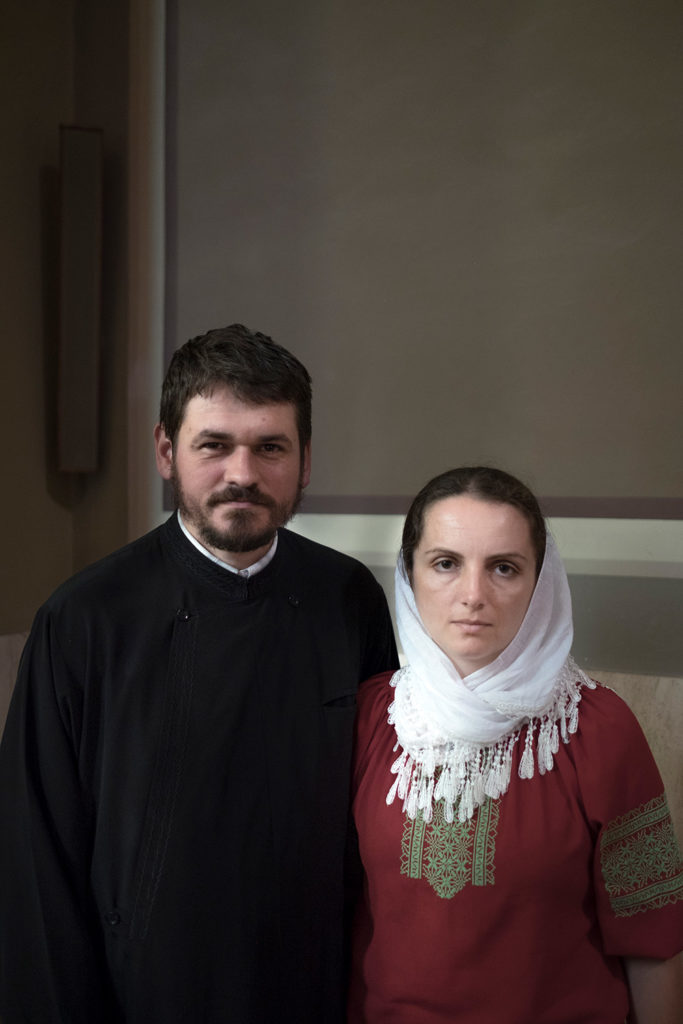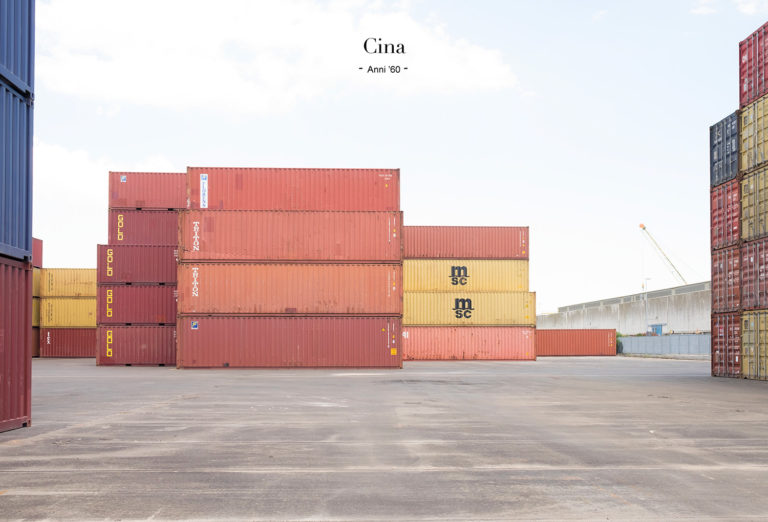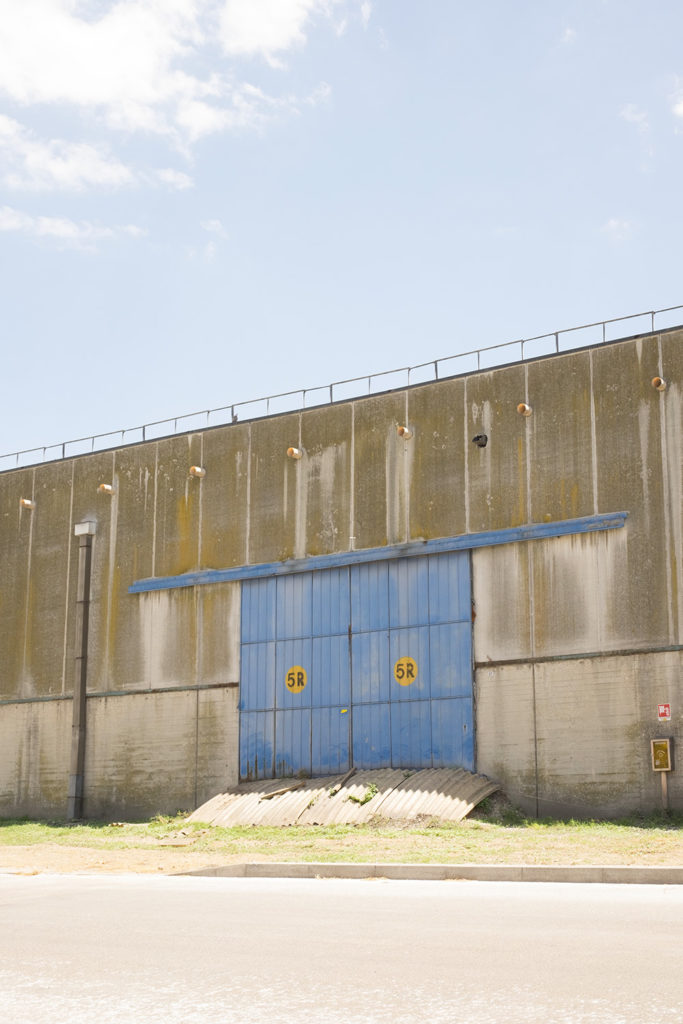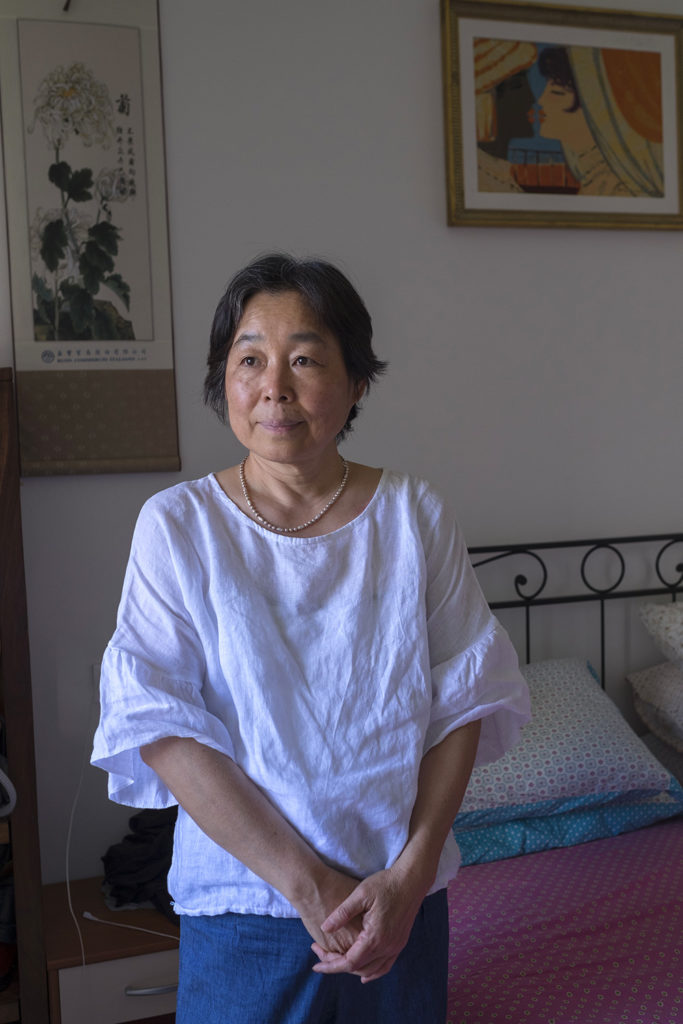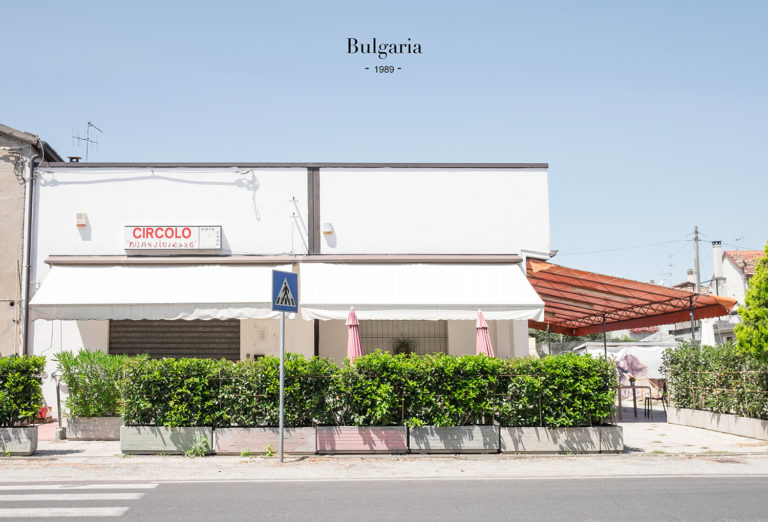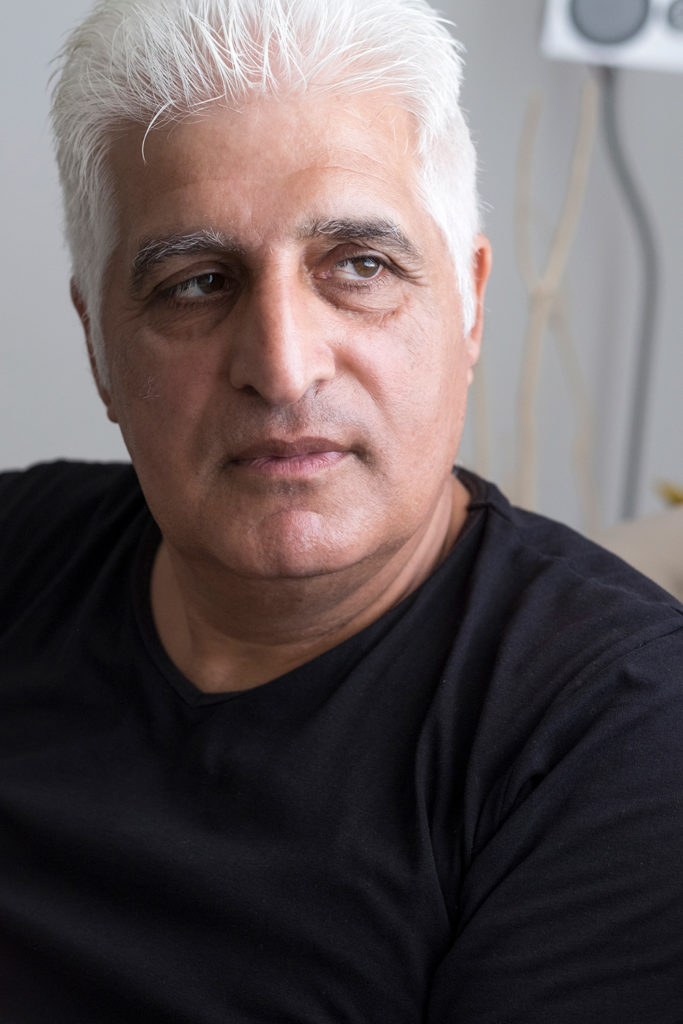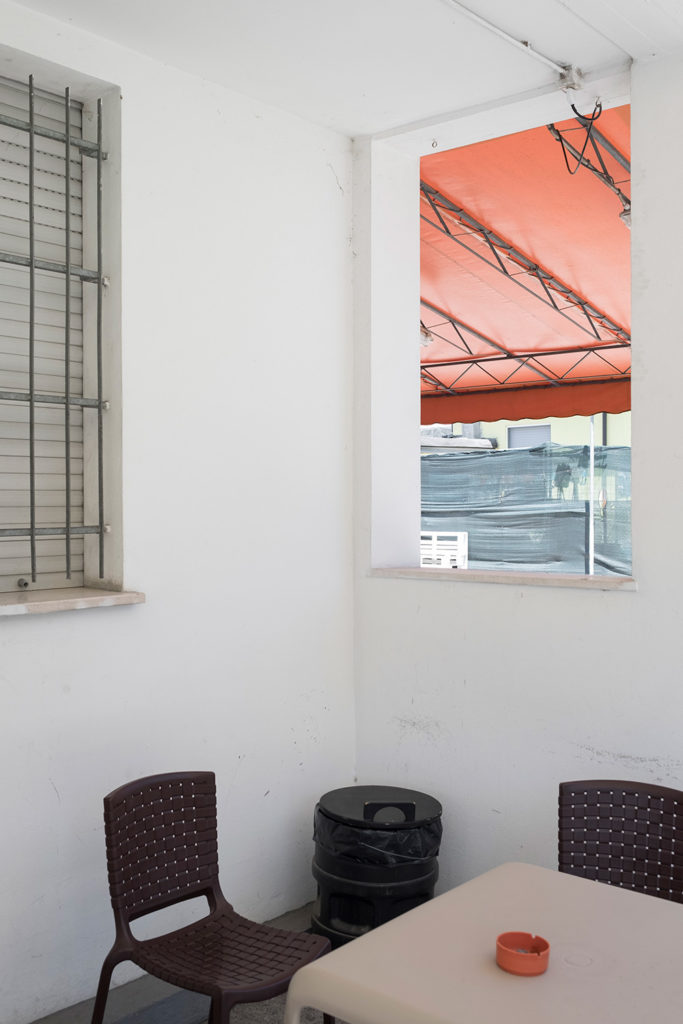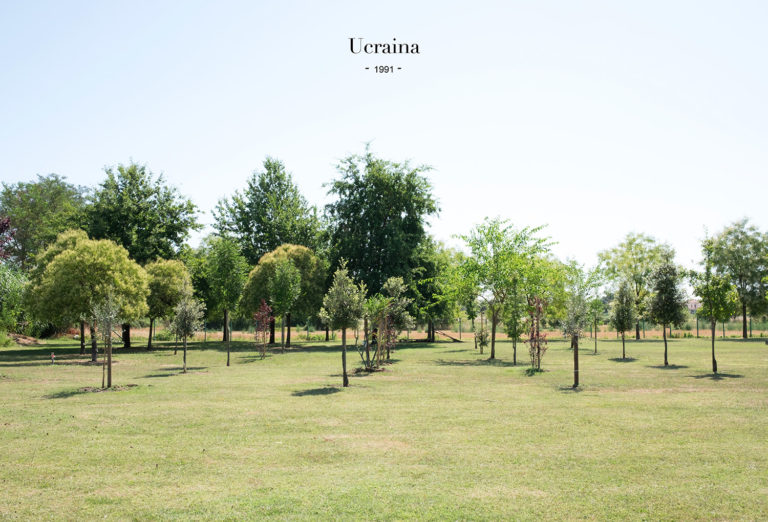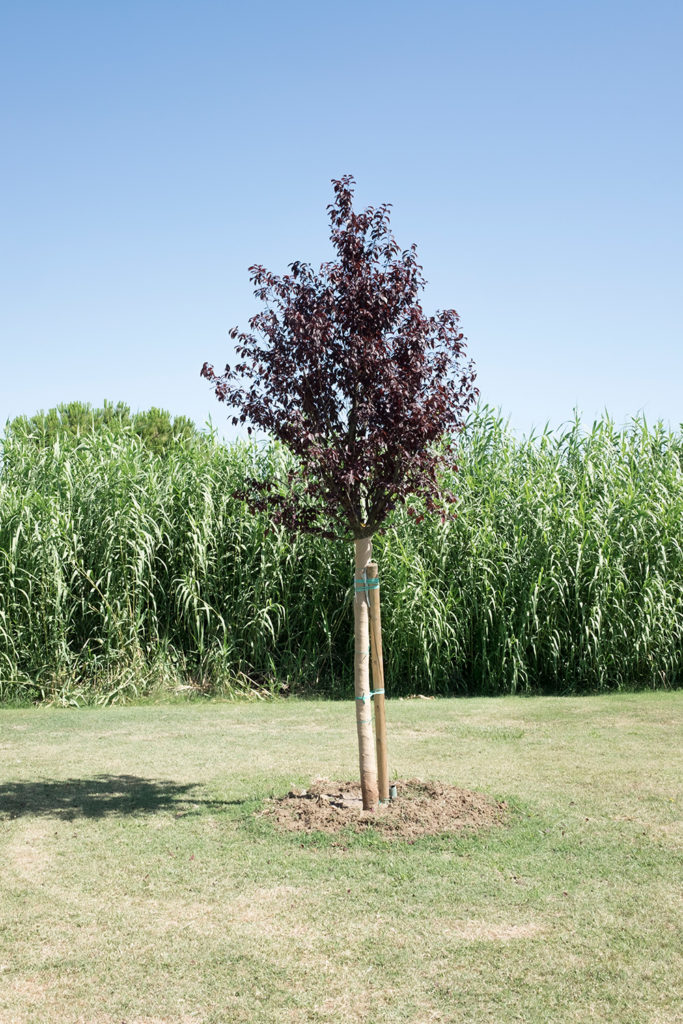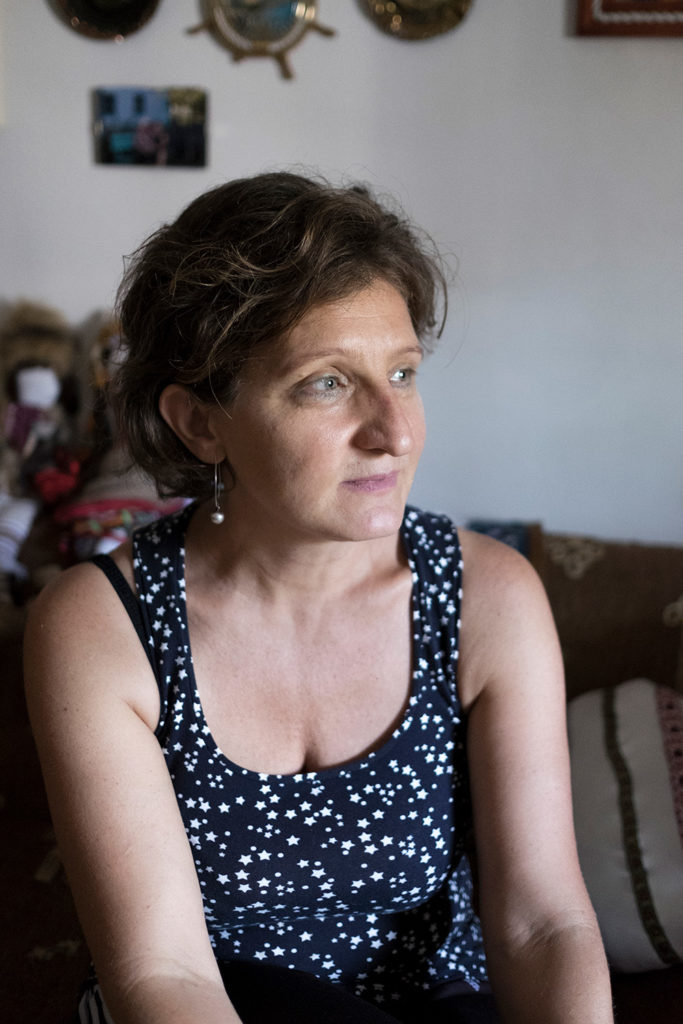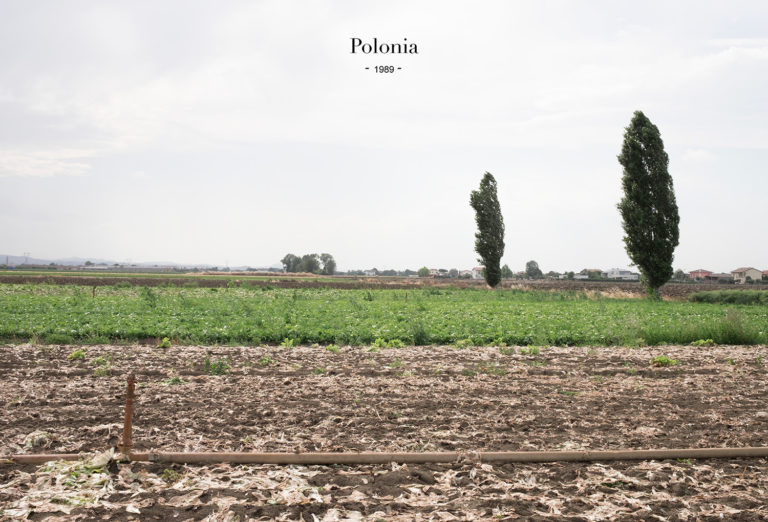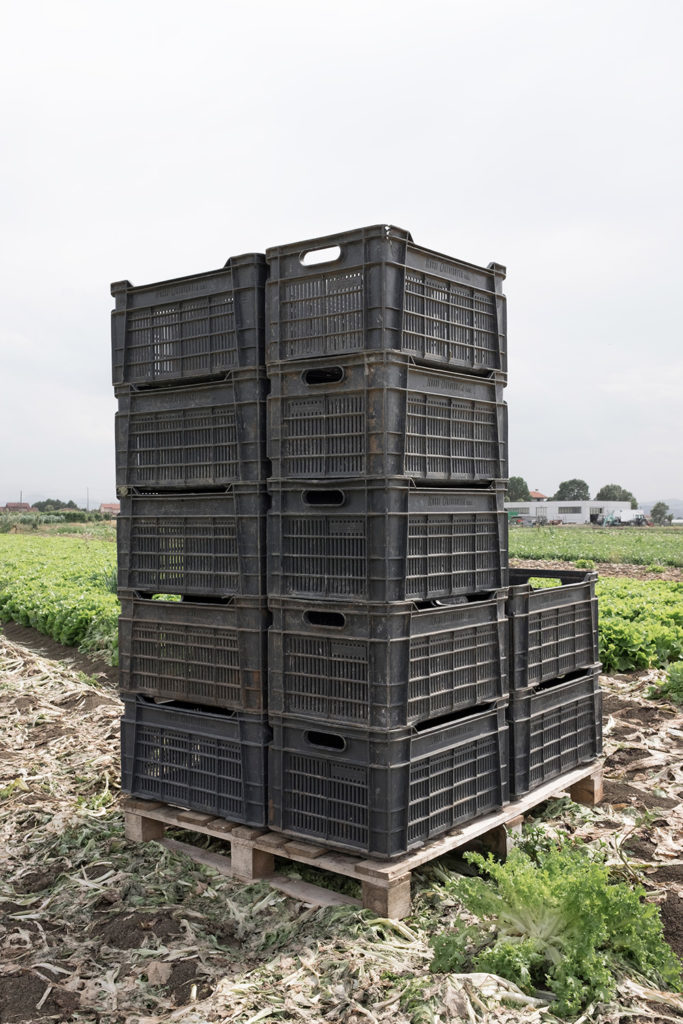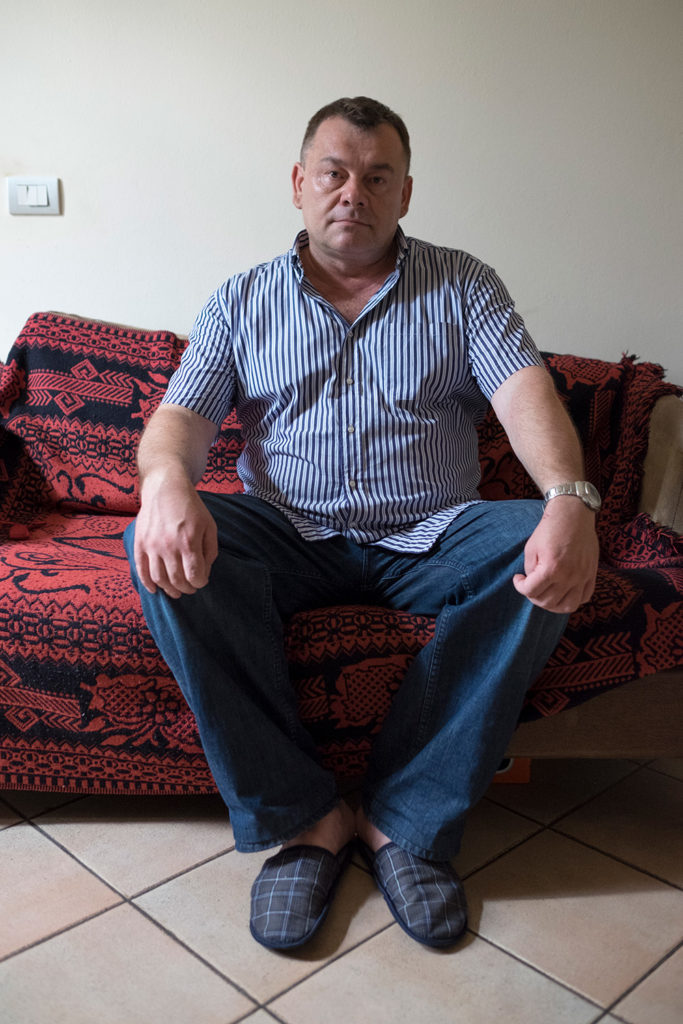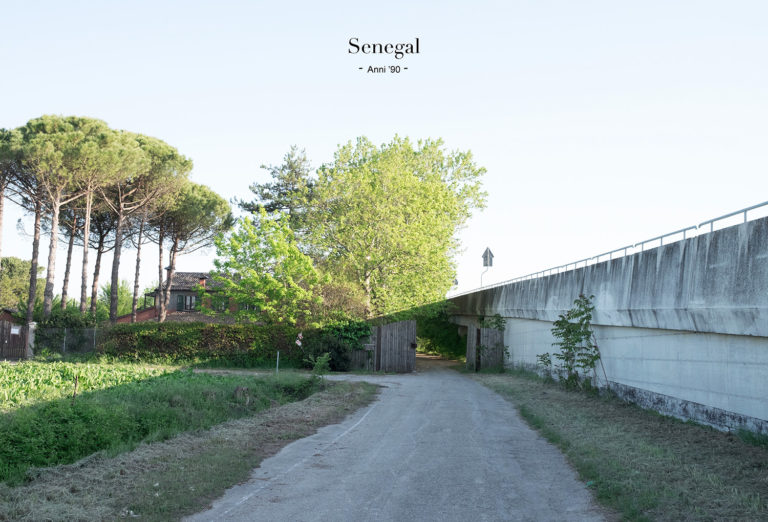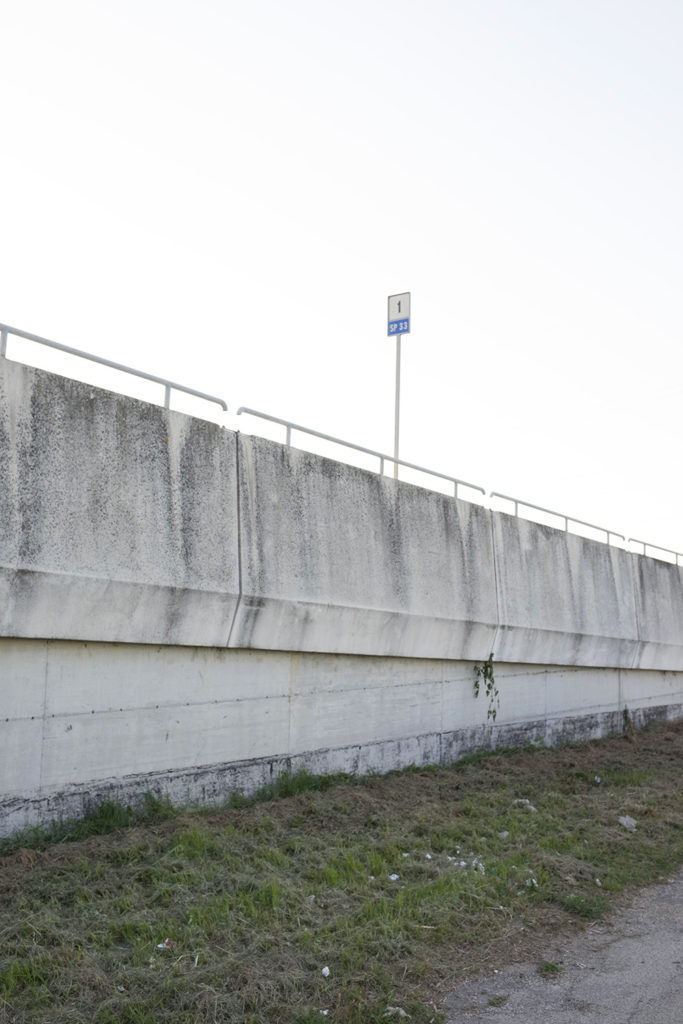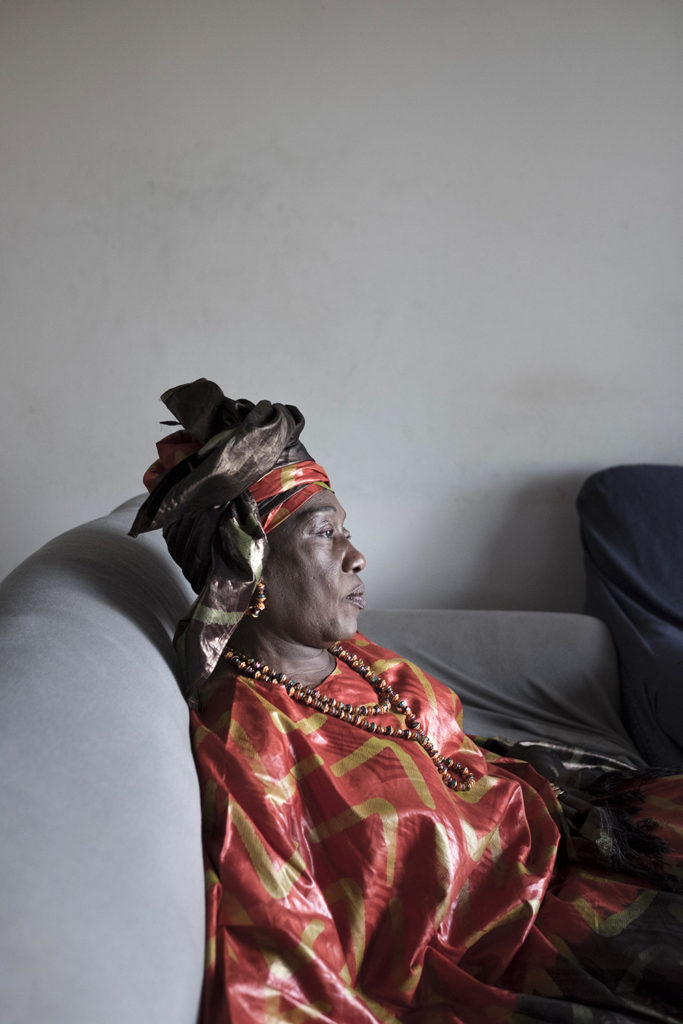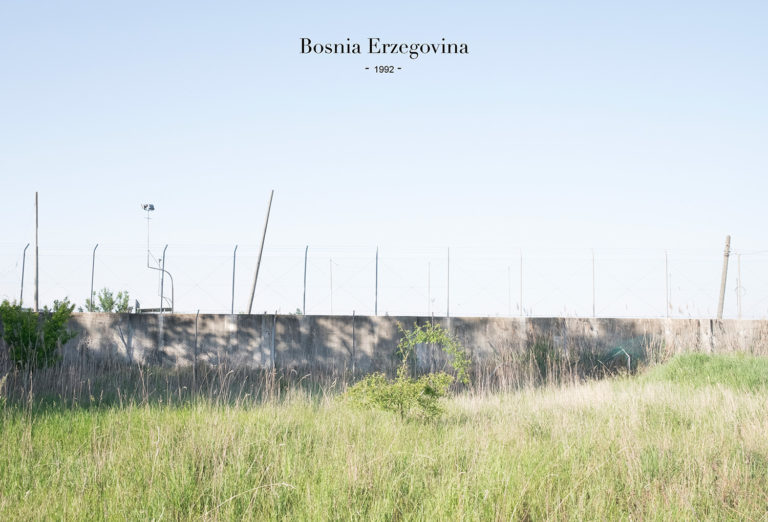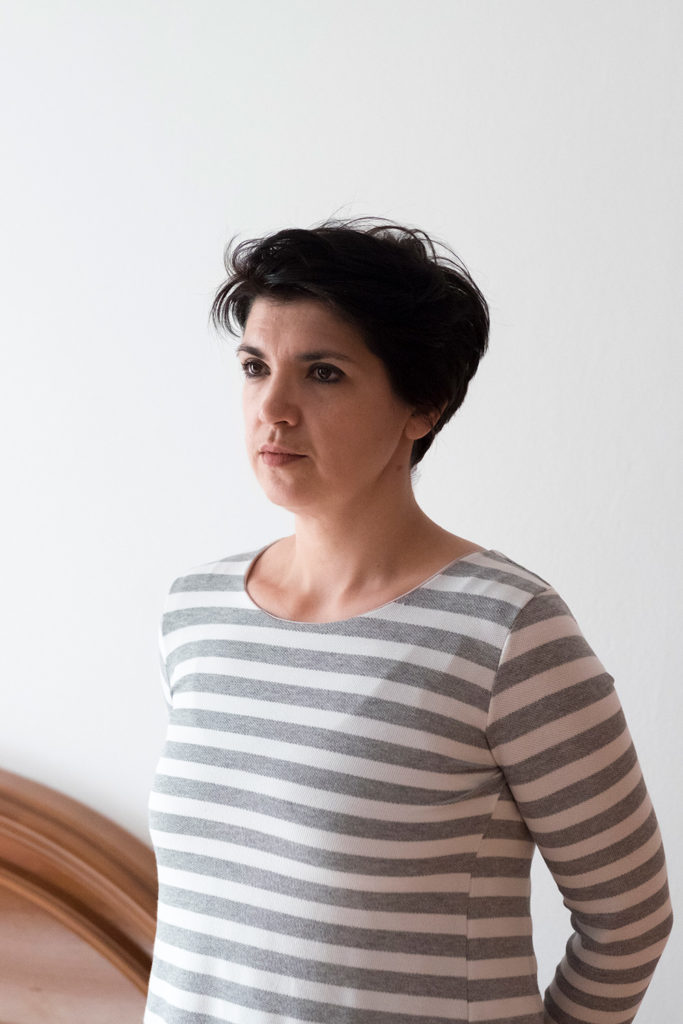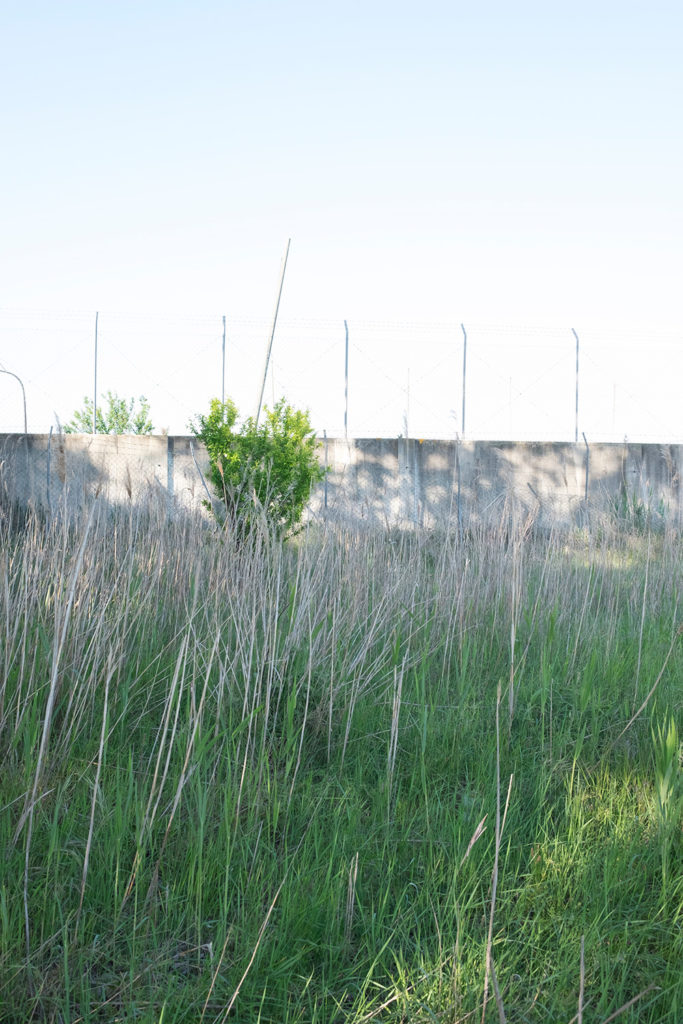21 febbraio 2018
PROJECTS | From where we belong
Level crossing. San Mauro a Mare (FC). The Albanian migration began with the fall of the People's Socialist Republic of Albania: In July 1990 the embassies were opened and in March 1991 Italy was unprepared to face the first major refugees emergency. Young men and women disembarked in Italy and suddenly they were catapulted into a free world that they had only seen and dreamed of through the television screen. They invented here a new life for themselves learning at their own expense from mistakes the cultural and social differences. At this level crossing, after the first moment of disorientation, the young Albanians found themselves asking residents and tourists in a queue for some cigarettes or change. Today the Albanian community is very much rooted to the point that it is the first foreign community on the territory, but the growing economy of Albania and the economic crisis in Italy is bringing many young people back to their homeland: In 2013 they were 2000, 23% more than the previous year.
Ledi 45 years old - Savignano sul Rubicone (FC) - from Lezhë, Albania. She arrived in Brindisi on March 8th, 1991 aboard the Legend Panama ship, the last leaving from the port of Durres with more than 5,000 people on board. She was 18 years old and she was not afraid: the crowd in front of her seemed to be a single person, and she had already seen so many, too many people leaving. On the ship she met who is now her husband and with whom she had two children. They are the first family to have settled in the Rubicon area. She refused the political asylum that she was offered and she immediately found a job at Cafar. She fitted in perfectly in the new environment in which she decided to live also thanks to the local people who offered her some help, not so much material but above all psychological, but such a support was something that lots of other young people from Albania had missed and that’s why they were in shambles in a country that they could not understand. She worked for Paola Frani in the fashion field and in April 2017 she opened a textile shop made in Italy in Durres. Today she lives between her two countries.
Level crossing. San Mauro a Mare (FC). The Albanian migration began with the fall of the People's Socialist Republic of Albania: In July 1990 the embassies were opened and in March 1991 Italy was unprepared to face the first major refugees emergency. Young men and women disembarked in Italy and suddenly they were catapulted into a free world that they had only seen and dreamed of through the television screen. They invented here a new life for themselves learning at their own expense from mistakes the cultural and social differences. At this level crossing, after the first moment of disorientation, the young Albanians found themselves asking residents and tourists in a queue for some cigarettes or change. Today the Albanian community is very much rooted to the point that it is the first foreign community on the territory, but the growing economy of Albania and the economic crisis in Italy is bringing many young people back to their homeland: In 2013 they were 2000, 23% more than the previous year.
Fiumicino. Savignano sul Rubicone (FC).In the second half of the eighties many university students left Morocco in search of a job abroad: it is not the economic situation to push to migration but the lack of a future perspective. It was difficult, for a foreigner without valid papers, to find a house where to live: only a few managed to rent some premises in Fiumicino which they had to sublet to other newcomers, thus living crammed in small spaces. Many immigrants, in order to survive, initially worked as peddlers until, thanks to the Martelli law in 1990, whose purpose was that of organically regulating immigration in Italy, they were able to obtain the valid papers and therefore a regular job
Mostafa-60 years old. San Mauro Pascoli (FC)He came from Béni Mellal, Morocco. He arrived in Italy in 1989 and in 1990 he obtained a residency permit and began to work regularly between farming and agriculture. In 1997 he applied for family reunification to make his wife and four children come to Italy. He is said to be a common man because in the community they are all brothers. He is one of the founders of the first Islamic Centre that in 1996 was opened in the industrial area of San Mauro Pascoli and that since 2005 has been a cultural association whose seat is in Gatteo and it was purchased thanks to a collection of money made by the community. The centre counts 90 members among Moroccans, Tunisians, Algerians, Albanians, Bosnians, Senegalese and Sri Lankan and it is the main meeting point for the community, both for moments of prayer and for cultural activities.
Fiumicino. Savignano sul Rubicone (FC).In the second half of the eighties many university students left Morocco in search of a job abroad: it is not the economic situation to push to migration but the lack of a future perspective. It was difficult, for a foreigner without valid papers, to find a house where to live: only a few managed to rent some premises in Fiumicino which they had to sublet to other newcomers, thus living crammed in small spaces. Many immigrants, in order to survive, initially worked as peddlers until, thanks to the Martelli law in 1990, whose purpose was that of organically regulating immigration in Italy, they were able to obtain the valid papers and therefore a regular job
Grand Hotel. Rimini.The Romanian migration in Italy characterised the whole twentieth century. It increased following the Romanian Revolution in 1989 and the phenomenon was further accentuated after 2002 with the liberalization of tourist visas in Romania. In parallel, in those same years, Moldova was witnessing a race to request the Romanian citizenship so as to obtain the passport and the related advantages deriving from Romania’s entry into the EU. Women came to look for jobs as caregivers and men were employed as seasonal workers, especially as labor force for the construction of hotels in the Riviera, as it’s the case for the Grand Hotel in Rimini. It is no coincidence that most of the hotel staff today are Romanian and that there is a Grand hotel of the same luxury chain of the Batavian family in Cluj-Napoca, the main north-west city of Romania from which most of the population, today living in the Rubicon District, come from. Since 2007, there has been a further boom in migration following Romania's entry into the EU and the consequent enjoyment for Romanian citizens of the benefits of free movement of people in the so-called ' Schengen Area '.
Grand Hotel. Rimini.The Romanian migration in Italy characterised the whole twentieth century. It increased following the Romanian Revolution in 1989 and the phenomenon was further accentuated after 2002 with the liberalization of tourist visas in Romania. In parallel, in those same years, Moldova was witnessing a race to request the Romanian citizenship so as to obtain the passport and the related advantages deriving from Romania’s entry into the EU. Women came to look for jobs as caregivers and men were employed as seasonal workers, especially as labor force for the construction of hotels in the Riviera, as it’s the case for the Grand Hotel in Rimini. It is no coincidence that most of the hotel staff today are Romanian and that there is a Grand hotel of the same luxury chain of the Batavian family in Cluj-Napoca, the main north-west city of Romania from which most of the population, today living in the Rubicon District, come from. Since 2007, there has been a further boom in migration following Romania's entry into the EU and the consequent enjoyment for Romanian citizens of the benefits of free movement of people in the so-called ' Schengen Area '.
Siviu and Alina-37 and 33 years old. Cesena (FC).They are from Ștei, Bihor County, Romania. After his graduation in theology and hers in Letters, they got married on August 18, 2007. On 9th September of the same year they left with the promise of a job in Italy and with the idea of putting aside some money in order to return home and build their life in Romania. They never got the job they were promised and when in mid-October, they were ready to return to Romania, they both found an occupation: Silviu as a carpenter and Alina as a basic assistant in a cooperative for which she still works as a nurse having obtained the OS Diploma. In Forlì, Alina's cousin was the priest of the Romanian Orthodox Church, and in 2009 Silviu met the bishop in pastoral visitation, who noted him among the many of the choir. Following this meeting, on 19th December 2010, Silviu was ordained priest in Cesena. Not having a stable seat, they celebrated their liturgies in various rented rooms, and in 2011 for seven consecutive Sundays even in their living room, until they got the current seat in Cesena in loan for use. For the Romanian community the sacraments are fundamental moments in their life and the church is therefore the meeting point for many young people between 30 and 40 years of age who came here to work.
T.C.R. Port. Ravenna.The only commercial port of Emilia-Romagna is the one in Ravenna. By virtue of its strategic geographical position it plays an important role for trade exchanges with the middle and the Far East, as well as being the leader in Italy for those with the eastern Mediterranean and the Black Sea markets. The first Chinese arrived here in the 1960’s, working as sailors on Cargo ships and, once at the port, as the Italians emigrated to America, they deserted to reach other destinations, especially the Netherlands. Since the 1970’s some of them began to settle in Italy, first dealing with catering activities and then as peddlers (mainly of ties). The 1990’s are characterized by the development of handmade sewing workshops and in the years 2000 by the boom of sushi restaurants. Today the trend is the purchase of bars, which must be equipped with slot machines, to be managed by new generations
T.C.R. Port. Ravenna.The only commercial port of Emilia-Romagna is the one in Ravenna. By virtue of its strategic geographical position it plays an important role for trade exchanges with the middle and the Far East, as well as being the leader in Italy for those with the eastern Mediterranean and the Black Sea markets. The first Chinese arrived here in the 1960’s, working as sailors on Cargo ships and, once at the port, as the Italians emigrated to America, they deserted to reach other destinations, especially the Netherlands. Since the 1970’s some of them began to settle in Italy, first dealing with catering activities and then as peddlers (mainly of ties). The 1990’s are characterized by the development of handmade sewing workshops and in the years 2000 by the boom of sushi restaurants. Today the trend is the purchase of bars, which must be equipped with slot machines, to be managed by new generations
Shi Shio Mien-60 years old. RiminiShe was born in Taiwan and she has been in Italy since 1981. She soon learnt Italian by studying in Perugia and she graduated in Rimini at the Hotel and Catering school. In 1985 she began to work in the retail sector opening a shop in Riccione. In accordance with the Law 1998 and thanks to her knowledge of the Italian language and to the word of mouth made more effective by the spread of mobile phones, she became a reference point for all the Chinese eager to comply with the directives as well as needing help with papers and bureaucracy. From that moment she became so passionate about social issues that she decided to leave the world of commerce. From 2000 she has worked for consulting, ASL (local health centres) and hospitals, for the court, for the police headquarters and for the school. President of the Rainbow Association of Riccione, she has worked since 2003 as a cultural mediator for the municipality of Savignano on the Rubicon and in 2007 she founded the “Association Between” together with 10 other people. Today she is also a teacher at the Language High School in Rimini.
Nonsolorosso Pub. Bulgarnò (FC).In the period between 1989 and 1996 about 650,000 people emigrated from Bulgaria among whom there were members of the Turkish minority and the Rom population belonging to the Bulgarian majority, mainly directed towards Western Europe: in 1989, 218,000 people left the country. The first to arrive in the Rubicon territory were men as agricultural workers who, once their situation with papers was regulated, requested and obtained family reunification with their wives and children. Today the largest community is in Gambettola, populated by Bulgarians predominantly coming from the south-central area of the country. In Bulgarnò, however, migrants are mainly from the north of Bulgaria and up to three years ago the meeting place for the newcomers was the Nonsolorosso bar which was used as a residence address. According to people’s gossips the name Bulgarnò would be the syncope of "Bulgarians No", to emphasize the disagreements between local people and Bulgarians. In fact, the village of Bulgarnò, as well as the neighbouring Bulgaria, has Byzantine origins and it was probably named after the Bulgarian soldiers who arrived at the time of the Longobardic.
Jordan-54 years old. Gambettola (FC).He is from Stara Zagora, Bulgaria. In Italy since 1992, he has lived and worked in hiding in various farms in the southern of Italy such as Termoli, Caserta and Rosarno, and then returned to Bulgaria to his wife who had just given birth. He returned to Italy in 1993, back to Bulgaria in 1996, and then back to Italy where he found a job as a mason and was welcomed as a son in the house of his master. After a few years he developed a strong allergy to cement that prevented him from continuing to work in the construction industry and it is then that he found a job as a truck driver, which was his father’s work as well as his brother’s. In accordance with the law 1998, he obtained the papers and requested to reunite with his family, bringing here his children and his parents in-laws who had been expelled in 1997. Today he is about to pay off the house loan in Gambettola.
Nonsolorosso Pub. Bulgarnò (FC).In the period between 1989 and 1996 about 650,000 people emigrated from Bulgaria among whom there were members of the Turkish minority and the Rom population belonging to the Bulgarian majority, mainly directed towards Western Europe: in 1989, 218,000 people left the country. The first to arrive in the Rubicon territory were men as agricultural workers who, once their situation with papers was regulated, requested and obtained family reunification with their wives and children. Today the largest community is in Gambettola, populated by Bulgarians predominantly coming from the south-central area of the country. In Bulgarnò, however, migrants are mainly from the north of Bulgaria and up to three years ago the meeting place for the newcomers was the Nonsolorosso bar which was used as a residence address. According to people’s gossips the name Bulgarnò would be the syncope of "Bulgarians No", to emphasize the disagreements between local people and Bulgarians. In fact, the village of Bulgarnò, as well as the neighbouring Bulgaria, has Byzantine origins and it was probably named after the Bulgarian soldiers who arrived at the time of the Longobardic.
Federico Fellini Park. Gambettola (FC).The Ukrainian migration is also called the caregivers ' migration, referring to the third migratory wave that mainly led women to come here to work in the field of care services (nursing people at home) following the fall of the wall and the Dissolution of the USSR. The two former migratory waves were at the end of the nineteenth century, predominantly towards America, to seek a better life and between the two wars, in order to flee from Stalin’s discriminations. The number of Ukrainian men in Italy today is lower than the women’ s, since they came either at a later time to follow their wives or sometimes together with their children who had remained in Ukraine up to that moment. It is no coincidence that in the north of the country there are television programmes that tell of entire countries without women. Once in Italy the family assistants often live at the house of the person being cared for and the park becomes the place where these women share private moments, meet, speak, cut their hair and even eat.
Federico Fellini Park. Gambettola (FC).The Ukrainian migration is also called the caregivers ' migration, referring to the third migratory wave that mainly led women to come here to work in the field of care services (nursing people at home) following the fall of the wall and the Dissolution of the USSR. The two former migratory waves were at the end of the nineteenth century, predominantly towards America, to seek a better life and between the two wars, in order to flee from Stalin’s discriminations. The number of Ukrainian men in Italy today is lower than the women’ s, since they came either at a later time to follow their wives or sometimes together with their children who had remained in Ukraine up to that moment. It is no coincidence that in the north of the country there are television programmes that tell of entire countries without women. Once in Italy the family assistants often live at the house of the person being cared for and the park becomes the place where these women share private moments, meet, speak, cut their hair and even eat.
Tamara-48 years old. Gambettola (FC).She is from Mykolaiv, Ukraine. She came to Italy in 2001 as a seasonal worker in Igea Marina with the idea of staying for only three months, but other job opportunities and love made her stay. In 2002, she was granted the papers with the Bossi-Fini law, but only in 2004 she could reunite with her son who, at the time, was 8 years old. Russian teacher and cultural mediator, she worked as a cleaner to allow her son to study, aware of the dignity that any job can bring. Her creativity led her to organize and animate parties to help the integration of Ukrainians into the social fabric, collaborating as a volunteer with the local municipality as well as with volunteer associations. She writes tales and poems, from which a Ukrainian song has been taken.
Provincial Road 13bis. San Mauro Pascoli (FC).The Polish were the first among the Eastern European countries to arrive here, even though today this community is among the smallest one in the territory of the Rubicon. Before 1989 the migration had mostly a political and ideological character. Since the early nineties, following the fall of the Iron Curtain, a mass migration began for work reasons. The first migrants were seasonal workers in the fields where the farmhouses also served as dormitories. In this place the first 17 men and women worked and lived in the territory of the Rubicon.Following EU accession on 1st May 2004, the growing economic development and the opening of Italian factories in Poland has led to a decrease in migration numbers due to economic needs and to the return of lots of young people to their homeland.
Provincial Road 13bis. San Mauro Pascoli (FC).The Polish were the first among the Eastern European countries to arrive here, even though today this community is among the smallest one in the territory of the Rubicon. Before 1989 the migration had mostly a political and ideological character. Since the early nineties, following the fall of the Iron Curtain, a mass migration began for work reasons. The first migrants were seasonal workers in the fields where the farmhouses also served as dormitories. In this place the first 17 men and women worked and lived in the territory of the Rubicon.Following EU accession on 1st May 2004, the growing economic development and the opening of Italian factories in Poland has led to a decrease in migration numbers due to economic needs and to the return of lots of young people to their homeland.
Miroslaw-42 years old. San Mauro Pascoli (FC).He was born in Tomaszów Lubelski, Poland. He arrived in Italy in 1997 to rejoin his wife, who came here as a caregiver in 1993. He has been working as a gardener, keeper and handyman at Mr. Casadei’s (owner of the homonymous shoe factory) part-time in the morning since 2014, and in the afternoon he still deals with online sales of scooters and machines destined to the Polish market. In his little free time he devotes himself to volunteering: he has got many contacts and friends and as he has been here for a long time, he has become a reference point for the people of his community. He strongly believes in the Polish economic growth, which he defines as the new East European China.
Provincial Road 33. From Savignano sul Rubicone to Gatteo (FC).The first Senegalese arrived in Italy in the 90’s in big cities like Milan, Rome and Bologna and then gradually moved to smaller places where job opportunities were greater, like the Rubicon area rich of farms and Poultry farming. As they arrived in hiding, today like yesterday, they worked as peddlers (Vù Cumprà) which allowed them to easily learn the basics of the Italian language and culture and to get in touch with people. In the house under the flyover on the PR 33 between Savignano and Gatteo, far from the urban centre and immersed in the green, the first Senegalese family has inhabited and settled in this area. Today the people resident in the area are of Islamic religion belonging to the Brotherhood of Muridiyya and they are mainly from the Wolof tribe which makes up the main ethnic group of Senegal with about 43% of the population.
Provincial Road 33. From Savignano sul Rubicone to Gatteo (FC).The first Senegalese arrived in Italy in the 90’s in big cities like Milan, Rome and Bologna and then gradually moved to smaller places where job opportunities were greater, like the Rubicon area rich of farms and Poultry farming. As they arrived in hiding, today like yesterday, they worked as peddlers (Vù Cumprà) which allowed them to easily learn the basics of the Italian language and culture and to get in touch with people. In the house under the flyover on the PR 33 between Savignano and Gatteo, far from the urban centre and immersed in the green, the first Senegalese family has inhabited and settled in this area. Today the people resident in the area are of Islamic religion belonging to the Brotherhood of Muridiyya and they are mainly from the Wolof tribe which makes up the main ethnic group of Senegal with about 43% of the population.
Beye-57 years old. Sant'Angelo-(FC).She was born in Touba, Senegal. She arrived in Italy with her sister in 1996 to look for work. She is the community Griot, "the origin of the mothers, of the tradition of the ancestors". The Griot is a poet and singer and plays the role of preserving the oral tradition of the ancestors.In some pre-colonial historical communities, the Griot also had the role of interpreter and ambassador. To the present day, as a result of the migration from the countryside and the globalization, many young people, even the Griot’s children, ignore the artistic practices and knowledge of their ancestors. For this reason, Beye’s role is fundamental for her community, in order not to lose the indissoluble bond with the land of origin.
Former Cagnona Military Base. San Mauro Pascoli (FC).It was on 17th May 1992 in wartime when Bosnian refugees came to the military base from the former Yugoslavia. They were about 300 people, especially women and children. The 4x6 mt rooms, 14 per floor, had three bunk beds, six wardrobes and a kitchenette. On each floor there was a restroom with a toilet and one with a bathtub. The refugees remained in the Military Base from 1992 to 1995, they were helped to find a job and to take part in the local community by voluntary associations, in particular from the Onlus. Over the years many families have returned home. Someone emigrated abroad, others remained in San Mauro Pascoli and surroundings well-rooted in the area.
Elzina-37 years old. San Mauro Pascoli (FC).She was born in Gračanica, Bosnia. She arrived with her family as a refugee at the former Military Base on May 17th 1992 at the age of 11. Of the trip, she recalls the grenades while waiting for the ferry from Croatia and the “Bucaneve” biscuits that the Italian soldiers distributed on the coach when they crossed the border. She was among the first children to learn Italian and became an interpreter for her community together with her older brother Sadmir. She lent her help in the hospital 24 hours a day, worked on the ambulance, in the offices of the police headquarters, where basic commodities such as the laundry, the necessary for personal hygiene and games for children were distributed. Today she works in a shoe factory and she cannot imagine her life away from Italy. She goes back to Bosnia just for her holidays.
Former Cagnona Military Base. San Mauro Pascoli (FC).It was on 17th May 1992 in wartime when Bosnian refugees came to the military base from the former Yugoslavia. They were about 300 people, especially women and children. The 4x6 mt rooms, 14 per floor, had three bunk beds, six wardrobes and a kitchenette. On each floor there was a restroom with a toilet and one with a bathtub. The refugees remained in the Military Base from 1992 to 1995, they were helped to find a job and to take part in the local community by voluntary associations, in particular from the Onlus. Over the years many families have returned home. Someone emigrated abroad, others remained in San Mauro Pascoli and surroundings well-rooted in the area.

